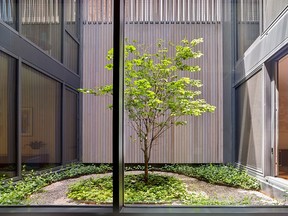Dubbeldam Architecture + Design focusing on livable homes, advocacy

Reviews and recommendations are unbiased and products are independently selected. Postmedia may earn an affiliate commission from purchases made through links on this page.
Article content
Canadian firm Dubbeldam Architecture + Design has been awarded the Royal Architectural Institute of Canada 2024 Architectural Practice Award at its awards ceremony in Vancouver.
The firm’s principal architect, Heather Dubbeldam, shares insights on the firm’s design focus, advocacy work and industry challenges.
What kind of buildings does your firm design?
Advertisement 2
Article content
When Dubbeldam Architecture + Design was founded just over 20 years ago, it primarily designed single-family custom homes, says Dubbeldam.
These days, it handles more multi-unit projects, with a specific interest in building highly liveable homes.
The housing crisis has created a focus on building homes as quickly as possible, but Dubbeldam says this inevitably sometimes results in quantity over quality.
“We’re trying to bring that really liveable collective housing environment to our cities.”
The firm also designs coffee shops and small boutique hotels.
Dubbeldam says there’s an eco-cabin resort in Baysville, Ont., in the works that is highly sustainable. A completed gorgeous getaway home in Muskoka, named Bunkie on the Hill, has also been built sustainably.
Advocating for important things
“A big part of our practice is the advocacy side of things. Advocating for things that are important to us,” says Dubbeldam.
Some of this work involves advancing women in architecture and promoting inclusivity through various organizations and projects.
One of these organizations is called Building Equality in Architecture Toronto, which champions the advancement of women in the architecture profession, she says.
Article content
Advertisement 3
Article content
Another organization that Dubbeldam leads is called Twenty + Change. Every three years or so, they call for submissions from emerging architecture practices around Canada (established for less than 10 years) to submit their work for consideration. About 20 of these firms are then featured in Canadian Architect magazine so people can learn more about them.
“It’s a nice boost for an emerging Canadian architecture practice,” she says.
Dubbeldam and her partner, Kevin McIntosh, also lead the Parking Day Toronto event. This event happens once a year, in September, and involves transforming parking spaces around the city “into a park for a day,” she says.
It’s a movement that started in San Francisco in 2005 and has been growing momentum.
“We have four parking spots in front of our building, so we got astroturf, lounge chairs, cafe tables and a food truck. We hosted a yoga session and games for kids.”
It’s all about raising awareness and making spaces for people instead of cars.
Most challenging thing about being an architect?
Being an architect is a big responsibility: The idea that the building you’re designing is being created to last hundreds of years, says Dubbeldam.
Advertisement 4
Article content
“We have to make sure we’re leaving a legacy with everything we do. You don’t want your building or interiors to be torn down in five to 10 years; you want it to last a long time and have a lot of value in the long term.”
Most architects genuinely believe that architecture can be used as a tool for positive change, but they are at the whim of their clients and the people leading the building project, says Dubbeldam. Sometimes, this can be tough because they do as much as they can to push for things they value and feel are important, but they’re just a few players in an often large team.
“We’ve always had really great clients.”
Recommended from Editorial
-
The Home Front: Smaller housing solutions
-
The Home Front: Good bathroom design promotes health and well-being
Article content
link
